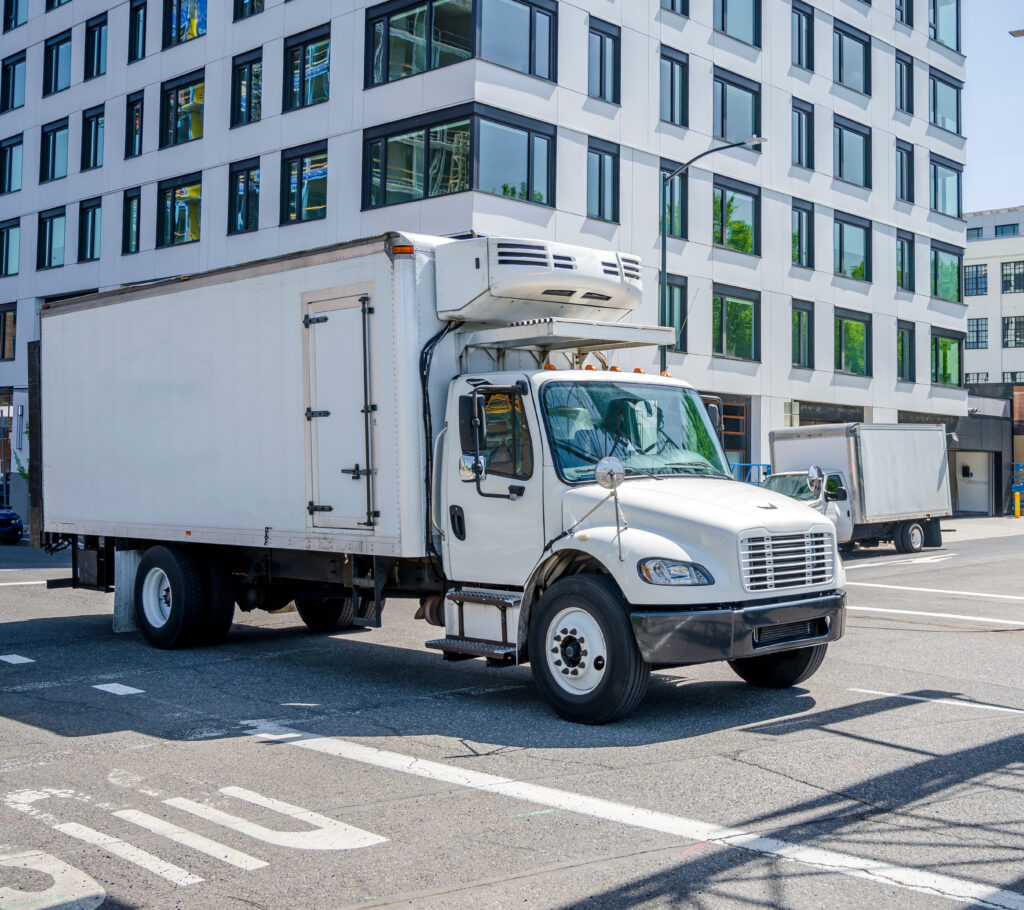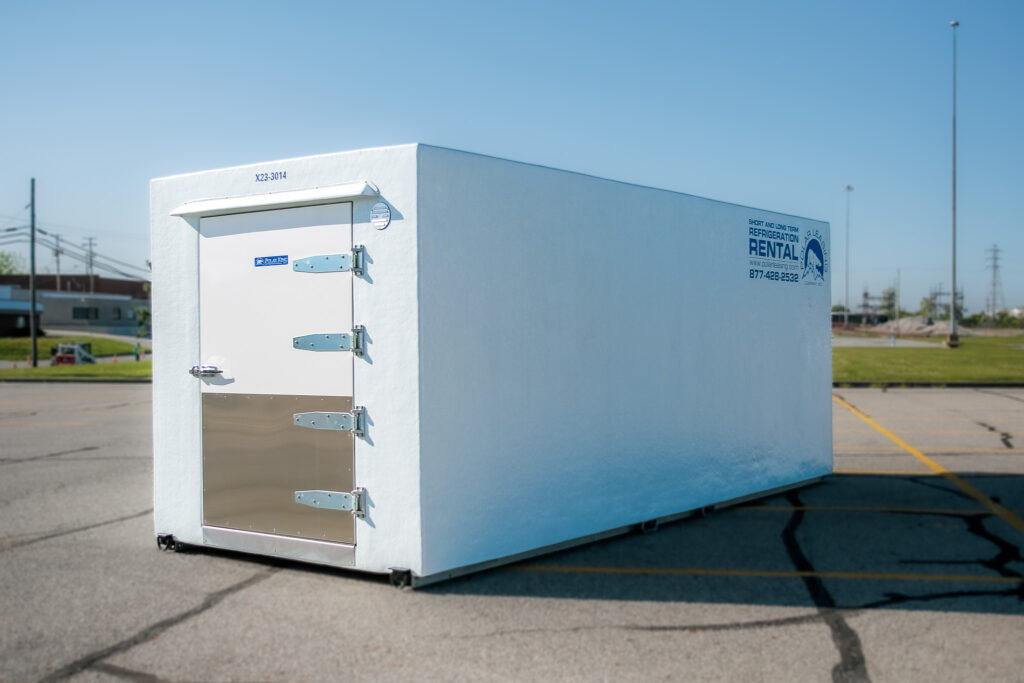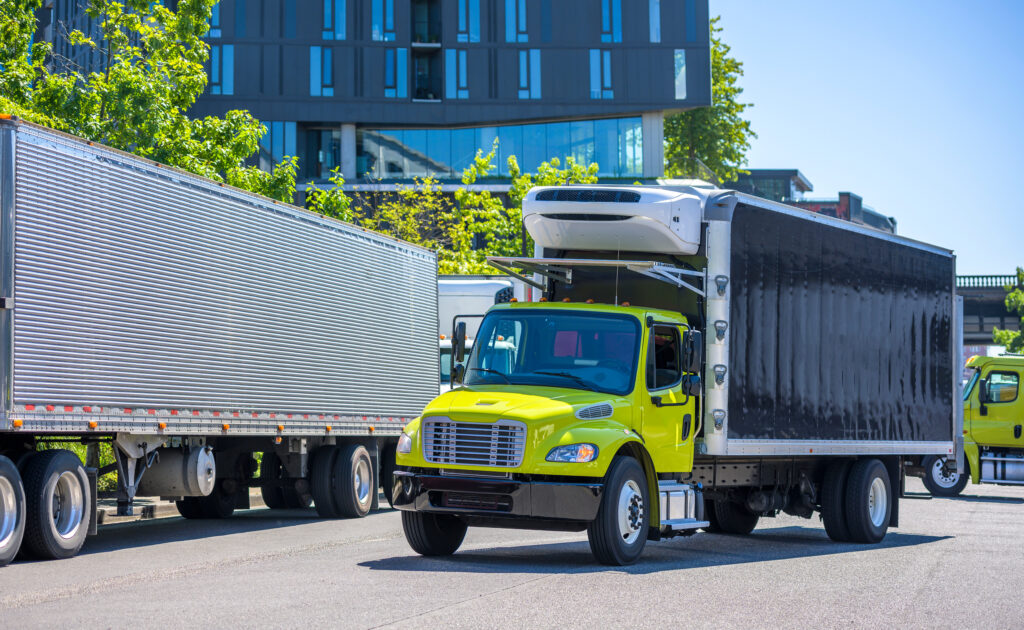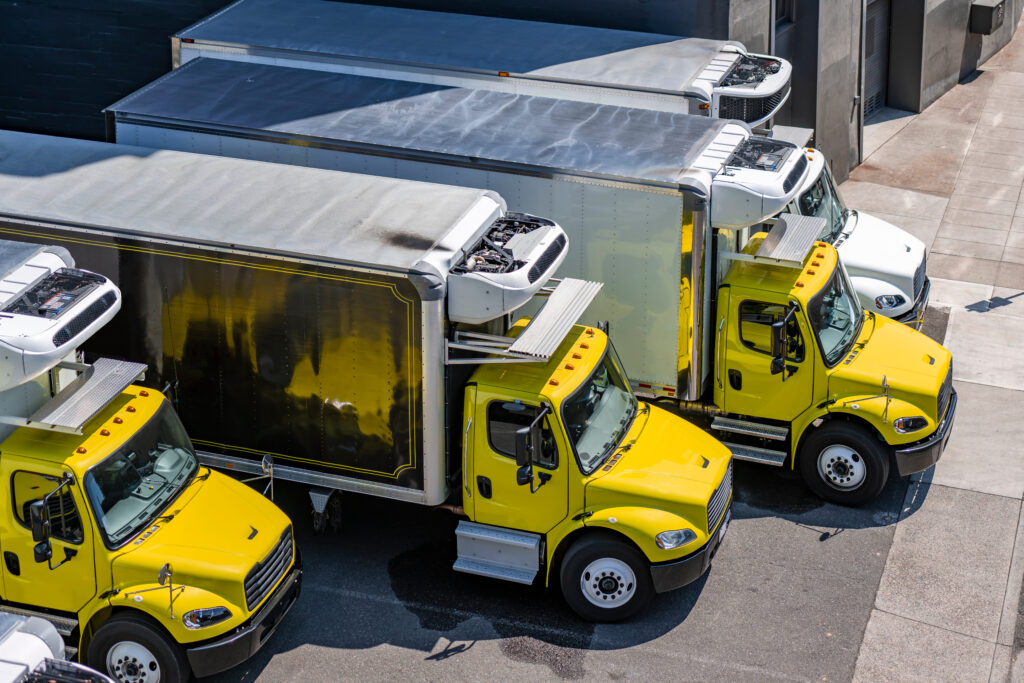Freezer Box Truck Rentals vs. Walk‑In Freezer Rentals: Which Is Right for You?
Benefits, key distinctions, and best-fit scenarios
When your operation suddenly needs extra frozen storage—whether because of a seasonal spike, a facility remodel, or an emergency outage—you usually have two realistic choices:
- A mobile solution such as a freezer truck rental (often called a freezer box truck rental or frozen truck rental).
- A stationary solution such as a walk‑in freezer rental delivered to (and left at) your site.
Both choices can keep product well below 0 °F, but they differ in cost, logistics, and day‑to‑day usability. This guide compares them side‑by‑side so you can pick the best fit for your business.
Table of contents
- Benefits, key distinctions, and best-fit scenarios
- What Is a Freezer Box Truck?
- What Is a Walk‑In Freezer Rental?
- Key Differences Between Walks ins and Freezer Trucks at a Glance
- Industry‑Specific Considerations
- Pros and Cons Summary
- Key Takeaways
- Making the Decision
What Is a Freezer Box Truck?

A freezer box truck rental is a medium‑duty truck chassis with an insulated cargo box and a refrigeration system powered by the truck engine or a dedicated diesel reefer unit.
- Temperature range: –10 °F to 20 °F (while the engine/reefer is running)
- Capacity: 1–8 pallets, depending on truck length
- Licensing: CDL driver required for most 26 ft models
“A freezer box truck provides a compartment with a cooling equipment system installed that can keep your items stored at a cold temperature. However, if you do not need your cooling system to move from one location to another, it can wind up costing you quite a bit more than just the truck rental fees. Cooling systems on a freezer box truck only function while the truck is running. If your needs are for a cooling solution in one location only, this means the truck will be burning fuel continuously while the cooling compartment is in operation.”
Common uses: mobile catering, multi‑stop frozen delivery routes, disaster‑relief supply runs.
What Is a Walk‑In Freezer Rental?

A walk‑in freezer rental is a self‑contained, factory‑built structure delivered by flatbed and set exactly where you need frozen storage.
- One‑piece fiberglass construction with 4 in. rigid‑foam insulation
- High‑efficiency refrigeration that plugs into on‑site electrical service
- Ground‑level entry—no lift gate or loading dock required
Common uses: production overflow, remodel “swing” space, seasonal inventory peaks, pharmaceutical validation storage.
Key Differences Between Walks ins and Freezer Trucks at a Glance

| Decision Factor | Freezer Trucks for Rent | Walk-In Freezer Rentals |
|---|---|---|
| Mobility | Drive to multiple sites daily | Fixed in one place |
| Operating Cost | Diesel fuel + driver wages + insurance | Grid electricity only |
| Temperature Stability | Fluctuations every time doors roll up | Tight hold with personnel doors & thick insulation |
| Loading Ergonomics | Dock height; ramps or lift gate often required | Ground-level, pallet-jack friendly |
| Capacity Expansion | One truck = one fixed volume | Modular—add units side-by-side |
| Regulatory Considerations | DOT rules, CDL drivers, emissions | Simple electrical inspection, local permit |
| Noise & Emissions On-Site | Continuous engine/reefer idle | Quiet, zero on-site emissions |
Let’s Unpack Those Differences
Mobility
A freezer box truck rental is built to travel. If you must keep inventory frozen while visiting several venues or drop‑off points each day, combining the cold storage and the vehicle makes perfect sense. A walk‑in freezer rental arrives by flatbed, is leveled and plugged in, and stays put until you ask to have it removed. If your product will remain on a single site for more than a day or two, paying for vehicular mobility quickly becomes an unnecessary premium.
Operating Cost
Freezer trucks for rent run on diesel: the engine (or auxiliary reefer) idles constantly to maintain temperature, and today’s fuel prices can turn a bargain into a budget‑buster in hours. Add driver wages, insurance, and mileage charges, and the true daily cost often doubles the headline rate. A walk‑in runs on shore power—essentially the same electricity that lights your building—so you pay only for kilowatt‑hours. For rentals lasting longer than a long weekend, the stationary option nearly always wins the cost comparison.
Temperature Stability & Product Safety
Rolling up a truck’s rear door lets warm air rush in and cold air spill out, forcing the reefer to work overtime and causing product‑temperature spikes. That might be okay for rapid deliveries but jeopardizes HACCP compliance during extended loading or storage. Walk‑ins use insulated swing doors that close automatically, minimizing infiltration and keeping internal temperatures within a narrow band. Their thicker insulation also provides greater thermal mass—an extra buffer if power is interrupted.
Loading Ergonomics
A frozen truck rental sits at dock height—perfect for facilities with high‑bay docks but awkward at ground level. Ramps or lift gates add cost, slow loading, and increase accident risk. Walk‑ins sit directly on concrete or asphalt, so staff roll pallets straight inside with a jack—no incline, no mechanical lift, fewer safety concerns, and better ADA compliance where it matters.
Capacity Expansion
One freezer box truck equals one fixed volume; once it’s full, you rent another truck—with another driver and more fuel. Walk‑ins are modular: place units side‑by‑side or end‑to‑end to create a bank sized precisely to today’s demand and tomorrow’s growth. Because each unit ties into the same electrical service (or a small panel upgrade), scaling up rarely requires major infrastructure changes.
Regulatory Considerations
Operating a freezer truck triggers DOT regulations, driver‑log requirements, and usually CDL drivers. Insurance carriers may demand higher coverage for vehicles storing high‑value frozen goods. Stationary walk‑ins sidestep most of those hurdles; you’ll need a simple electrical inspection and, in some municipalities, a temporary‑use permit—paperwork that’s faster, cheaper, and easier to maintain.
Noise & Emissions On‑Site
Diesel engines and reefer units generate a steady hum—plus exhaust—that can violate local ordinances or annoy neighbors. A walk‑in freezer uses an electric condensing unit quieter than most household HVAC compressors and produces zero on‑site emissions. Reduced noise and fumes are critical for restaurants with patio dining, hospitals with patient windows, or film sets where audio clarity matters.
Industry‑Specific Considerations

Countless sectors—far beyond foodservice—periodically need reliable sub‑zero space, from pharma firms validating vaccine lots to construction crews supporting remote jobsites. Yet the “right” solution is never one‑size‑fits‑all; it hinges on whether the freezer must travel, how long it will be on‑site, what power or fuel is available, and the level of product‑handling control each application demands. The table below spotlights the most frequent scenarios we encounter across industries and shows why those users tend to lean toward either a freezer box truck rental or a stationary walk‑in unit.
Core customization options:
- Temperature set‑points (blast –10 °F vs. hold 0 °F)
- Door style (roll‑up vs. swing; personnel doors)
- Interior fit‑out (racking, pallet guides, meat rails)
- Security & telemetry (remote temperature monitoring, GPS, locks)
| Industry | Why They Might Pick a Freezer Truck Rental | Why They Might Pick a Walk-In Freezer Rental |
|---|---|---|
| Caterers & Event Venues | Mobile service to multiple locations | Single-venue festivals needing weekend-long storage |
| Food Manufacturers & Distributors | Route deliveries covering many stops | Plant expansion overflow or equipment change-outs |
| Grocery & Retail | Pop-up promotions across stores | Remodel swing space at one location for 3-6 months |
| Pharmaceutical & Life-Science | Mobile vaccine clinics and outreach | Static validated storage at clinics, labs, or hospitals |
| Emergency Response | Supply drop-offs to multiple shelters daily | Long-term disaster-relief base camps |
| Construction & Remote Sites | Supplies must travel between jobs | Fixed crew camp needing quiet, efficient storage |
Pros and Cons Summary
| Freezer Box Truck Rental | Walk-In Freezer Rental | |
|---|---|---|
| Pros | • Mobility to multiple locations • No site prep besides parking • Turnkey delivery with driver |
• Lowest operating cost over 14+ days • Quiet & emission-free on-site • Ground-level, safer loading • Scalable—add units as demand grows |
| Cons | • Fuel burn while idling • Higher daily rental cost • Driver/insurance requirements • Temp swings when roll-up door opens |
• Not drivable; relocation requires flatbed • Needs dedicated electrical circuit • Permitting in some municipalities |
Key Takeaways
- Choose mobility when you truly need it. If you must make deliveries or support multiple venues in a single shift, a freezer truck rental is purpose‑built for the job.
- Choose efficiency when you don’t. For any on‑site frozen storage longer than a weekend, electricity‑powered walk‑ins slash fuel spend, driver fees, and regulatory headaches.
- Temperature stability matters. Walk‑ins hold tighter ranges—protecting product quality and HACCP compliance when doors open frequently.
- Budget beyond the daily rate. Diesel, driver wages, insurance, and maintenance add up quickly for freezer trucks; walk‑ins require only grid power.
- Site logistics drive safety. Ground‑level walk‑ins reduce forklift accidents and manual‑handling injuries compared with loading dock‑height trucks.
Making the Decision
Need to roll from venue to venue this week? A freezer box truck rental keeps the cold chain intact on the move.
Staying put for a remodel, surge, or audit? A walk‑in freezer rental from Polar Leasing delivers quiet, energy‑efficient frozen storage right where you need it—without burning a drop of diesel.
Ready to size the right unit? Call Polar Leasing at 877‑428‑2532 or click “Request a Quote.” Our team will help you lock in the right model and options—so you can focus on running your business with confidence.
